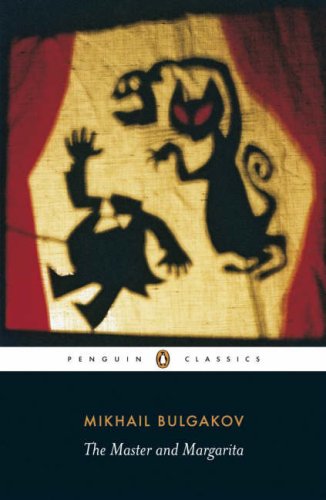 The devil is unleashed in Stalinist Moscow. The funny thing is that while the devil kills, maims and causes havoc throughout the city, he is very far from a traditional definition of evil. In fact, the character struck me as being more like an avenging angel, punishing people for various sins such as cowardice, greed, vanity or lust.
The devil is unleashed in Stalinist Moscow. The funny thing is that while the devil kills, maims and causes havoc throughout the city, he is very far from a traditional definition of evil. In fact, the character struck me as being more like an avenging angel, punishing people for various sins such as cowardice, greed, vanity or lust.
There is a further subversion of expectations later in the novel when Margarita makes a pact with the devil to find the character she calls the Master. We are so used to Faustian pacts throughout literature and popular culture that the assumption is that it will work out badly – which it does in a way, but not in the way that you’d expect. The devil is more true to his word than most of the human characters in the book, and doesn’t require much in return for his favours.
Cowardice seems to be chief among Bulgakov’s targets, which is understandable given the times in which the novel was written. In Stalinist Russia, as under any dictatorship, the choice between cowardice and death would have been a frequent one, and the majority necessarily chose the former. There are frequent allusions to Soviet life: sudden disappearances, bureaucratic entities with ridiculous compound names, etc. I suspect that many of the characters are thinly-veiled versions of Russian writers and critics of the day, too, but my knowledge of 1920s/30s Russian literati doesn’t allow me to get the references. Still, it doesn’t matter – there’s plenty more going on here.
In fact, it’s the kind of book that you could probably read several times and get new layers of meaning each time. The character of Pontius Pilate appears throughout the book, including at the beginning and the end, and was the subject of a book written by the Master and a story told by the devil to prove the existence of Jesus to a doubting literature professor just before he predicts (or engineers?) the professor’s decapitation by a tram. Decapitation is a repeated motif, as are sin and punishment.
One thing I found amazing about the book was that I believed in the characters and the action, even when it was absolutely absurd, as it frequently was. I think Bulgakov achieved this by focusing on the ordinary aspects of the situation, not on the absurd. For example, when a cat jumps on a subway car and attempts to pay ten kopecks to the conductress, Bulgakov adds in little details like the fact that he grabbed hold of a handrail and paid through a window “open on account of the stuffiness”. By reminding readers of familiar things like this, he makes the situation seem more real. I know it probably still sounds absurd when taken out of context like this, but in the book itself it worked, trust me!



There are 2 comments
Definitely agree that this is a book which benefits from re-reading – for example, the whole Pilate strand made much more sense to me on the second time round. It’s such a wonderful book!
Yes, perhaps I’ll give it another read – can’t believe it’s been 15 years already! It’s one of the books I’ve held onto despite multiple moves to different countries, so I think in a way I’ve been planning a reread all this time. Thanks for reminding me of it!